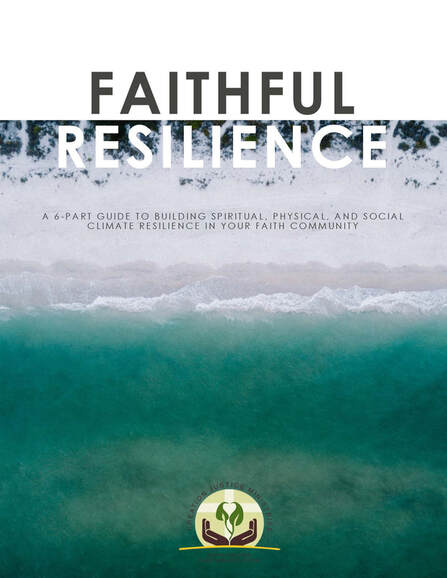How can our churches be hubs of resilience, helping our communities weather the physical, social, and spiritual storms of the climate crisis?
Over the last decade, hurricanes have intensified, wildfires have burned stronger, and heat waves have baked our cities. These events are expected to get worse in the next decades. Most of our faith communities are not ready for these disasters. Yet, the communities who are most threatened by climate change can also play a pivotal role in building resilience in their towns and cities. Whether a church community has a large facility, land access, a strong social network , or something else, their assets can be channeled to build climate resilience in preparation for the coming physical and spiritual storms of the climate crisis.
Join us in the call for faithful resilience.
Over the last decade, hurricanes have intensified, wildfires have burned stronger, and heat waves have baked our cities. These events are expected to get worse in the next decades. Most of our faith communities are not ready for these disasters. Yet, the communities who are most threatened by climate change can also play a pivotal role in building resilience in their towns and cities. Whether a church community has a large facility, land access, a strong social network , or something else, their assets can be channeled to build climate resilience in preparation for the coming physical and spiritual storms of the climate crisis.
Join us in the call for faithful resilience.
Resources for Resilience
Virtual Workshops |
Faithful Resilience Guide |
|
Our workshops and maps provide technical assistance and support to grow resilient faith communities. . Visit our youtube channel to watch the recordings of numerous workshops on climate resilience and topics including climate trauma, policy, Lenten worship, and disaster preparation.
|
Download the Faithful Resilience series for a guide to integrating teaching and action on climate resilience into your congregation. This 6-part guide will equip you with theological reflections for sermons or bible study, questions for reflection or conversation, action steps for your church, and examples of churches who are building resilience in their community.
|
Faithful Resilience Storymap
You are not alone.
There are many faith communities taking action towards faithful resilience. View the map below to learn about the churches that are working to grow resilience for their congregations and beyond.
Mapping the Climate-Church Crisis
According to the National Climate Assessment, seas could rise by more than one foot by 2050 and up to eight feet by 2100. Meanwhile, hurricanes will continue to intensify, bringing stronger winds and more rain ashore.
Use the map below to see how churches along the coast will be affected by sea level rise and hurricane storm surge. Search for your own home or congregation by typing the address in the search bar.
Use the map below to see how churches along the coast will be affected by sea level rise and hurricane storm surge. Search for your own home or congregation by typing the address in the search bar.
How to use this map:
To see various scenarios of sea level rise, select from Current MHHW (Mean Higher High Water), 1 ft, 3 ft, and 6 ft of Sea Level Rise from the legend on the left.
To view the name and information for a specific church, click on the orange dot.
To search for your home or church, type the address into the search bar in the top right.
Congregation data compiled by Avery Davis Lamb from various sources.
Sea Level Rise data from the National Oceanic and Atmospheric Administration Office for Coastal Management.
National Oceanic and Atmospheric Administration National Hurricane Center.
To see various scenarios of sea level rise, select from Current MHHW (Mean Higher High Water), 1 ft, 3 ft, and 6 ft of Sea Level Rise from the legend on the left.
To view the name and information for a specific church, click on the orange dot.
To search for your home or church, type the address into the search bar in the top right.
Congregation data compiled by Avery Davis Lamb from various sources.
Sea Level Rise data from the National Oceanic and Atmospheric Administration Office for Coastal Management.
National Oceanic and Atmospheric Administration National Hurricane Center.
